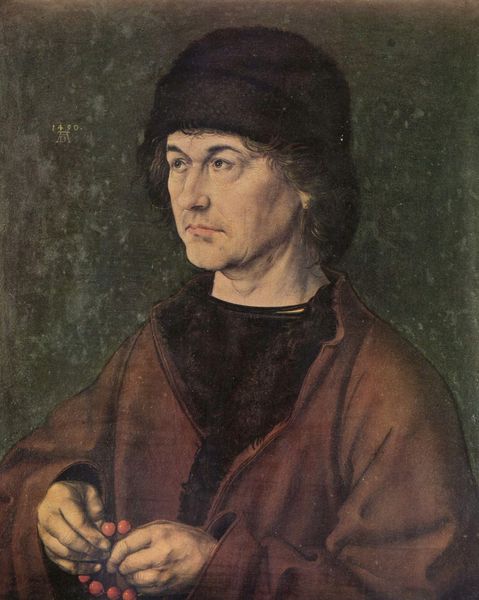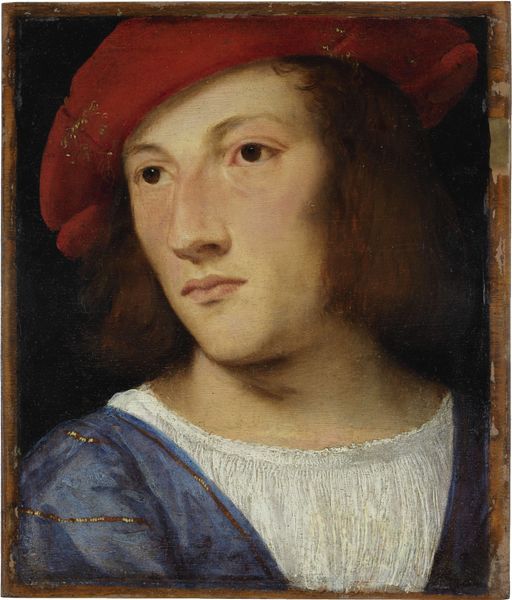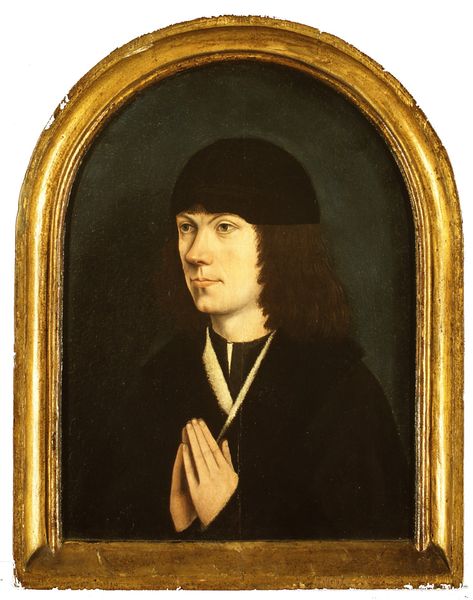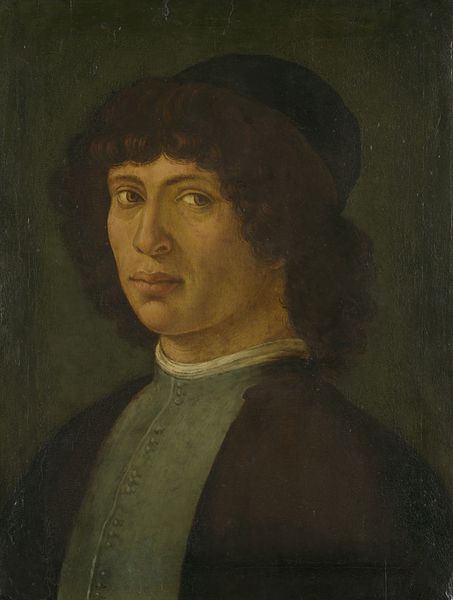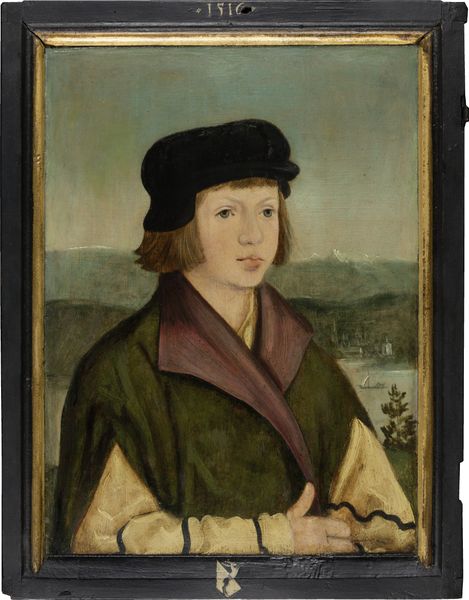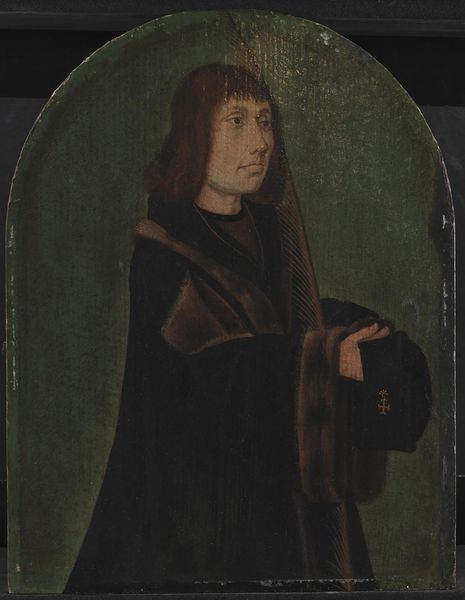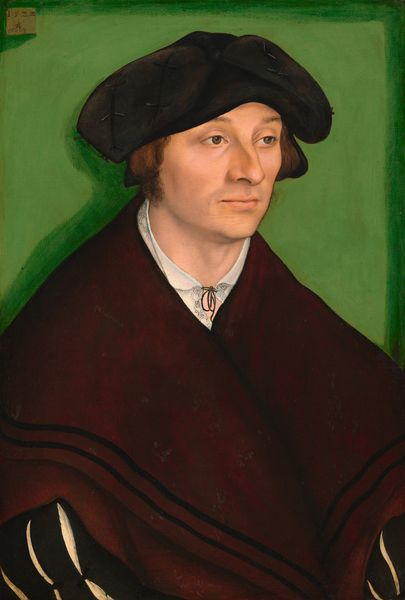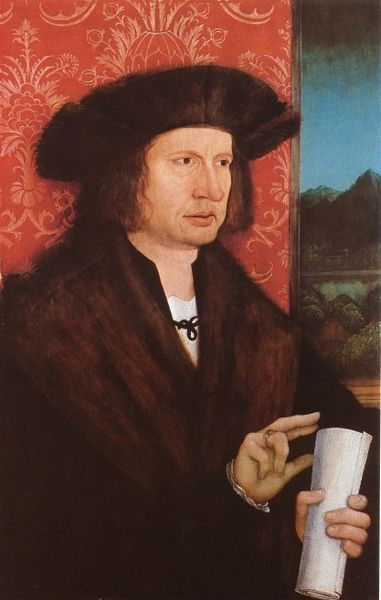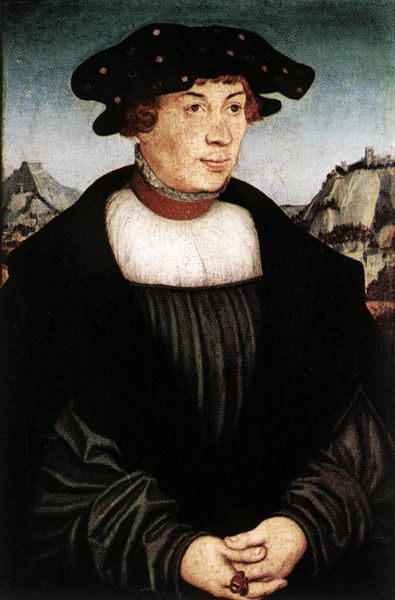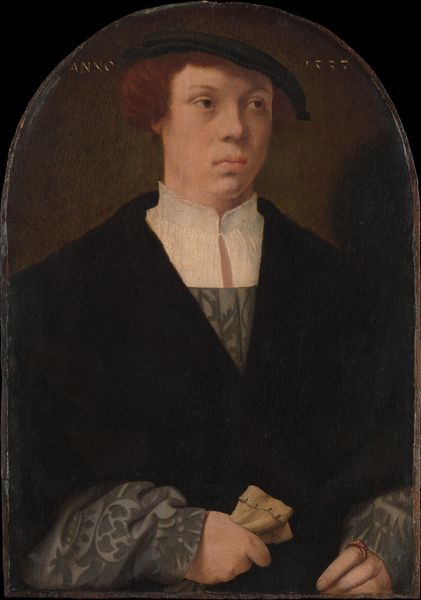
painting, oil-paint
#
portrait
#
figurative
#
painting
#
oil-paint
#
figuration
#
northern-renaissance
Copyright: Public Domain: Artvee
Lucas Cranach the Elder painted this portrait of a man with a rosary sometime in the early Sixteenth century. Cranach worked in Wittenberg, Germany, and was a court painter to the electors of Saxony. The man's rosary is a string of beads used in Catholic prayer. It is a visual signifier that connects the sitter with a particular religious tradition. In the early Sixteenth century, though, this tradition was under pressure. Saxony was where Martin Luther launched the Protestant Reformation. Cranach's position at court put him at the heart of these changes: he painted Luther's portrait many times, as well as portraits of Catholic figures. The rosary in this portrait might be a marker of conservative religious identity, but it could also reflect the turmoil of the Reformation, when individuals were forced to take sides in a religious and political conflict. Understanding the social meaning of this portrait requires historical research, but it rewards our attention to the role of art in expressing and responding to social change.
Comments
No comments
Be the first to comment and join the conversation on the ultimate creative platform.
